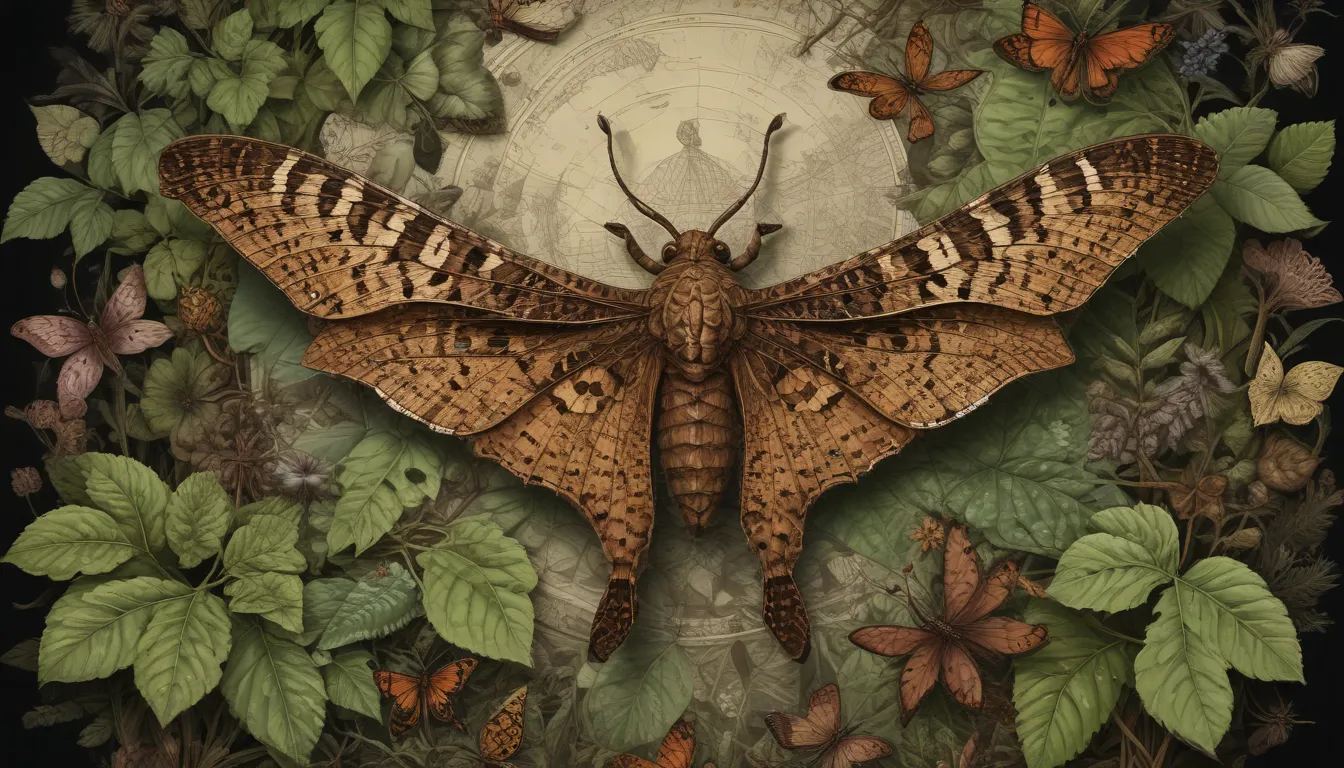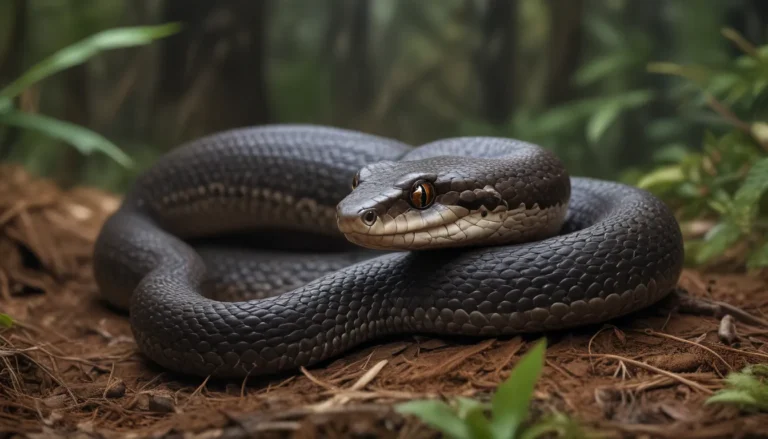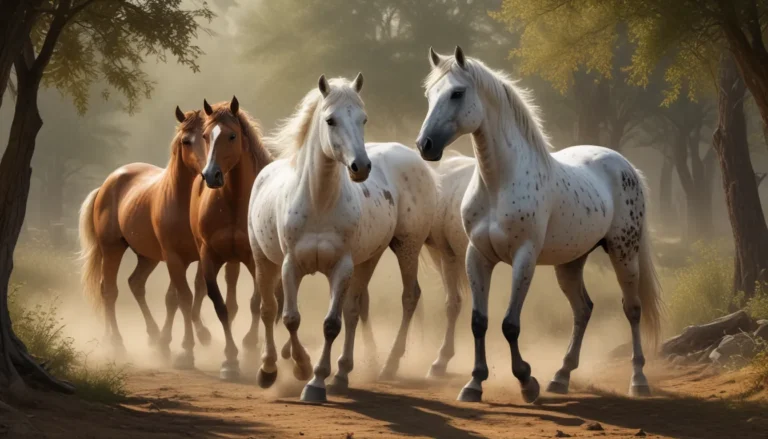The pictures we use in our articles might not show exactly what the words say. We choose these pictures to make you interested in reading more. The pictures work together with the words but don’t take their place. The words still tell you the important facts.
Are you intrigued by the wonders of nature and the creatures that inhabit our world? If so, you're in for a treat as we delve into the fascinating world of dobsonflies. These unique insects, also known as hellgrammites, are captivating creatures that play a crucial role in freshwater ecosystems. Join us as we uncover 10 fun and surprising facts about dobsonflies that will leave you in awe of their beauty and complexity. Whether you're a biologist, a bug enthusiast, or simply someone who appreciates the allure of nature, prepare to be spellbound by these incredible insects. So, sit back, relax, and let's embark on a journey to discover the mystique of dobsonflies!
Key Takeaways:
- Dobsonflies, also known as hellgrammites, are fascinating insects with a fearsome appearance but are harmless to humans. They contribute to ecosystem balance by controlling aquatic pests and have a short adult lifespan.
- Dobsonflies undergo a complete metamorphosis, starting as eggs, then larvae, and finally emerging as adult insects. Their impressive wingspan and unique mating ritual make them captivating creatures in the insect world.
The Enigmatic World of the Dobsonfly
The Dobsonfly, also known as the hellgrammite, belongs to the family Corydalidae, and is an intriguing insect that captivates the attention of nature enthusiasts worldwide. Known for their unique appearance and interesting behaviors, dobsonflies are truly fascinating creatures.
Embracing the Fearsome Appearance of the Dobsonfly
One of the most striking features of the male Dobsonfly is its large mandibles that resemble antlers, giving it a fearsome look. However, despite their intimidating appearance, dobsonflies are entirely harmless to humans and do not pose a threat through biting or stinging.
Unveiling the Short Adult Lifespan of Dobsonflies
Once dobsonflies reach adulthood, they have a brief lifespan of only a few days to a couple of weeks. During this time, their primary focus is on reproduction and ensuring the continuation of their species, showcasing the ephemeral nature of their adult life stage.
The Aquatic World of Dobsonfly Larvae
Dobsonfly larvae, commonly known as hellgrammites, spend their early life stages in freshwater habitats such as streams and rivers. As voracious predators, these larvae feed on other aquatic insects and small invertebrates, showcasing their adeptness at catching prey.
A Glimpse into the Dobsonfly’s Mating Ritual
During the mating season, male dobsonflies engage in gentle combat using their long mandibles to win the attention of females. Upon successfully attracting a mate, the male and female dobsonflies participate in a brief copulation period, showcasing the intricacy of their mating behavior.
Dobsonflies: Guardians of Ecosystem Balance
As larvae, dobsonflies play a crucial role in freshwater ecosystems by preying on other insects, such as mosquitoes, and maintaining a balance in the ecosystem by controlling aquatic pests. Their contribution to ecosystem balance highlights the significance of these insects in maintaining a healthy environment.
The Global Presence of Dobsonflies
Dobsonflies can be found in various regions worldwide, including North and South America, Europe, and Asia. These insects prefer habitats near freshwater sources, such as rivers and streams, where they play a vital role in the ecological balance of their surroundings.
The Magnificent Wingspan of the Dobsonfly
The adult male dobsonfly boasts an impressive wingspan that can measure up to 7 inches (18 cm) in certain species, showcasing their majestic appearance in flight. In contrast, female dobsonflies have shorter wings and are less mobile than their male counterparts.
The Metamorphosis of the Dobsonfly
Similar to many other insects, dobsonflies undergo a complete metamorphosis, transitioning from eggs to larvae, undergoing pupation, and finally emerging as adult dobsonflies. This transformation is a remarkable journey that highlights the life cycle of these captivating insects.
In Conclusion
In conclusion, dobsonflies are enigmatic creatures that continue to captivate entomologists and nature enthusiasts with their unique characteristics and behaviors. Whether it's their fearsome appearance, impressive wingspan, or essential role in freshwater ecosystems, dobsonflies stand as remarkable insects in the natural world. The next time you encounter a dobsonfly near a river or stream, take a moment to appreciate the beauty and complexity of these incredible insects.
FAQs
Q: What is the size of a dobsonfly?
A: Male dobsonflies can grow up to 5 inches in length, including their mandibles, while females can reach up to 6 inches in length.
Q: Are dobsonflies dangerous to humans?
A: No, dobsonflies are harmless to humans and do not pose any threat through biting or stinging.
Q: Where can dobsonflies be found?
A: Dobsonflies are primarily found near freshwater sources like rivers, streams, and ponds in regions across North and South America, Europe, and Asia.
Q: What do dobsonflies eat?
A: Dobsonflies are carnivorous insects that primarily feed on small aquatic insects, larvae, and even small fish.
Q: What is the lifespan of a dobsonfly?
A: The lifespan of a dobsonfly typically ranges from 1-2 weeks during their adult stage, focusing on mating and reproduction within this time frame.
Our dedication to delivering accurate and engaging content is at the core of our mission. Each fact on our site is contributed by individuals like you, ensuring a diverse range of insights and information. Our commitment to quality is upheld by our dedicated editors who meticulously review each submission, guaranteeing credibility and authenticity in the facts we share. Trust in our pursuit of delivering trustworthy and fascinating content as you explore the wonders of nature and learn with us.






